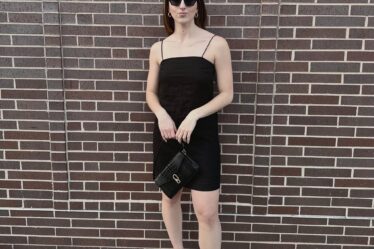
This article first appeared in The State of Fashion: Technology, an in-depth report co-published by BoF and McKinsey & Company.
Zalando is Europe’s largest online-only fashion retailer, but there’s another way it often describes itself: Europe’s most fashionable tech company. Technology has been central to how the company operates since its founding in 2008 in Berlin. Today it uses data to optimise everything from how it buys products from brand partners to how it delivers items to customers. It also leverages technologies, including AI, to deliver shoppers a more personalised experience on its site and app. The approach has worked: in its 2021 fiscal year, total merchandise volume on its platform rose 34 percent year on year to €14.3 billion ($15.7 billion), bringing in revenue of €10.4 billion.
Robert Gentz, co-founder and co-chief executive, is helping to steer Zalando to its next goal: by 2025, it expects merchandise annual sales to top €30 billion as it aims to capture more than 10 percent of the European fashion market. It’s a lofty ambition, and far from guaranteed as competition grows online. If Zalando is to achieve it, it must continue to set itself apart, and technology will be vital in the effort.
BoF: Personalisation has been a major focus at Zalando for years and is a key part of the customer experience it offers. Why is it so important for the company?
Robert Gentz: On Zalando you have 1.4 million different items. It is a huge selection. And then you have 48 million customers. Using technology and data to bring the right customer to the merchandise, or the right merchandise to the customer, is important because, for these 1.4 million choices, how do you make sure that she finds one item? So we’re trying to use technology to personalise it for customers as much as we can. It comes down to the matchmaking problem: how do you matchmake merchandise with customers?
BoF: Which technologies are you using for this task?
RG: It’s AI. There’s one programme that is running, an algorithmic fashion companion, which is based on items that you have bought in the past. The algorithm combines fitting items to [create] an outfit, which we have learned through how people combine [items]. When you look at click-through rates and buy-through rates, the outfits we’re producing are hitting the mark of what customers want. So it’s algorithms that are continuously improving with feedback loops from customer data as well as human feedback that we internally produce.
BoF: What are some of the ways a customer’s experience on the site or app is tailored to them?
RG: First of all, in onboarding you already have an opportunity to express brands you like, your sizes. That personalises the site already for you. In terms of the product and merchandise to the teasers that you see, it is customised so the Zalando shop looks different to every single customer once they actually have an interaction with us.
BoF: What metrics does Zalando look at to determine if these efforts are successful?
RG: Sometimes the short-term metrics are not always the ones that lead to the right long-term answers. If you want to just optimise click-through rates, then the items that might be the most fancy ones have the highest click-through rates but are probably not the ones that create the right offering, the right experience in the long term. What we are mostly optimising is long-term customer lifetime value, and the long-term customer lifetime value is generated through complex algorithms that [factor] how much time you spent on site, how much are you browsing and what are you buying — it’s different sets of [key performance indicators].
BoF: Discovery of new products is one type of value a retailer can offer shoppers, but if shoppers are getting personalised recommendations based on past behaviour, does that limit their chances of discovering new items they might love but that aren’t like what they’ve bought in the past? Does Zalando take any steps to account for this?
RG: Just looking at the past does not always answer the question for the future. What we actually take a lot of inspiration from is how the music industry is trying to solve the problem. You cannot only do it by machines and past behaviours. You always have to mix in new and modern fashion elements. This is where the fashion people help the technology people.
BoF: So there’s still old-fashioned human curation in the process?
RG: Yeah. In the end it’s all about emotion. Nobody wants to just shop in a big automated warehouse. It is about the art as much as it’s about the science.
BoF: Determining the right size and fit of a product remains one of the biggest obstacles shoppers face when buying online. Zalando has invested heavily to help solve this issue. It acquired a virtual dressing room company in 2020, has an an entire size and fit department, and is establishing a technology hub in Zurich dedicated to the task. How is Zalando using technology to solve or at least reduce these issues, and what solutions is it exploring?
RG: What we’re trying to achieve is by, probably 2030, you don’t really need the physical changing room. You have the same experience everywhere. What we are doing at this stage is mostly based on data we get from our customers to help them make better choices. It’s very much based on returns — why you return a certain item — and customer feedback.
We have many customers who order a very wide range of products and across brands. A customer returns an item, and another customer returns exactly the same item for the same reason, but kept a similar one. You get a data graph — a graph of fitting — and based on that we’re able to make recommendations with existing customers with whom we have a deep relationship on whether items fit or not. We have already been able to reduce size-related returns by 10 percent. The next iteration of this will be when we move more towards whole-body measurements and experiment much more with 3D technology and body measurement technology.
BoF: Logistics is another complex area. How is Zalando using AI or other technologies to manage logistics?
RG: One of the biggest tech teams we have is working on convenience and logistics. An interesting problem is where do you allocate an item with the [greatest] proximity to a customer across a warehouse network, which is very important to drive sustainability and delivery times by avoiding single-item shipments. Where you have size and brand and other items, it gets very granular. This is a very big data and algorithmic problem.
BoF: Are there features of Zalando’s organisational structure that allow it to better integrate technology and data? Even companies that want to make the best use of technology aren’t always set up for it. Departments might be siloed, for example, so they’re not looking at the same data to make decisions.
RG: One of the big things that we at least try to do is to bring cross-functional teams together as much as we can. We have about 2,500 software engineers working at Zalando in various teams. When we have large-scale projects, we try to bring the different disciplines to the table and have them all looking at this problem.
BoF: One of the big challenges companies face is making sure all the data they’re relying on is clean, and then they need to be able to derive valuable insights from it. How does Zalando tackle these challenges?
RG: I wouldn’t say we are perfect at this, but we’re very focused on it. We set ownerships for specific amounts of data we produce in terms of who is responsible for it and have constant discussions about how we get better data. It’s a culture of data cleanliness.
BoF: AR and VR have gained more attention as everyone talks about the metaverse. Are there emerging technologies or applications Zalando sees as being able to have a big impact in the future?
RG: Coming back to the real-life problems of size and fit, this augmented reality space might be a good catalyst to produce real breakthroughs in terms of solving the virtual try-on experience for customers and having definite answers if an item fits you personally or not, before you have it physically in your hand. It’s something that we feel quite passionate about, that this part of the metaverse might actually help us to solve big problems on the size-and-fit and sustainability area. When it comes to a purely virtual world and to items that only live virtually, we’re still exploring.
BoF: Even as e-commerce has grown, stores are still where most sales happen. In 2018, Zalando launched its Connected Retail platform to offer inventory from physical stores. How is Connected Retail progressing and how does technology enable that programme?
RG: Throughout the pandemic obviously this scaled quite a lot, so there’s now about 7,000 stores that are trading on Connected Retail. It’s a big piece of the partner programme. How technology can help [is that] we actually provide [partners] with an interface. It doesn’t require any integrations into a store. It requires a match of the inventory a store has with a database so that customers can order from it, and it requires a certain interface with regards to physical aspects of the logistics. In the future, where it gets much more interesting is when we are able to combine this with our local delivery efforts [to] enable customers who want to order inventory that is close by.
BoF: Zalando says it wants to have a net-positive impact — that is, running the company “in a way that gives back more to society and the environment than we take.” It’s a big goal and something much of the fashion industry is thinking about. What role can technology play here?
RG: I think a lot of the challenges in fashion with regards to sustainability — with regards to size and fit, overproduction, resource allocation, personalisation and so on — is fundamentally a data and collaboration problem. As fashion brands get more data-savvy in terms of their own supply chain — they don’t need to be more tech-savvy but I think more data-savvy — and collaborative, we can all jointly produce a fashion ecosystem which makes more sense and is less resource-consuming.
What we’re trying ourselves is to work with brands very early in the design process to make sense of how data can help the entire process. Less resources are consumed, at least for us in terms of delivery and returns. It creates more profit pools for everyone, and this can be reinvested. But generally what to me is very clear is, in the end, it’s about data, it’s about collaboration, data exchange. Many of the problems that we’re seeing in terms of overproduction, in terms of wrong production, or not designing for circularity, can be solved in the long-term.
This interview has been edited and condensed.




